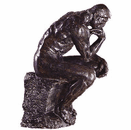Stan Lee
Comic books have often told tales of legendary figures. Superheroes and masked adventurers live among the pages of these works of art and literature. However, comics were not always viewed as works of great importance; they were seen as quite the opposite. For years in the 20’s and 30’s comics had been seen by the public as being for children. The leading producer of these comics was a company called Detective Comics (DC), publisher of such classic series as Batman and Superman The characters of DC, with few exceptions, were mostly shallow, underdeveloped archetypes of perfection; Superman could not be harmed, and Batman’s alter ego was a millionaire. It wasn’t until the 1950’s and 60’s that one man revolutionized how America, and indeed the world, viewed comic books. This man’s name was Stanley Martin Lieber, later to become known as Stan Lee. It was Stan Lee who changed comic books into works of great significance and impacted the world in more ways than perhaps he realized.
Stan was born in Manhattan, the son of Romanian-born Jewish immigrants. He grew up having to work to make ends meet for his struggling family. This gave Stan a deep understanding of life and the problems real, everyday people can have. While he was a fan of the idealistic comics of his youth, Stan realized that beneath the mask, superheroes were indeed everyday people. Eventually, after many years of working as a delivery boy, and other odd jobs around New York, Stan began to work as an assistant at Timely Comics. His love of the printed word and of pulp storytelling grew as the comic company grew, ultimately becoming Marvel Comics. It was at this juncture that Stan Lee was able to showcase his true genius. He was allowed to write his own series of superhero comics, one of which was the origin of The Amazing Spiderman. Spiderman represented a new kind of superhero. Its main character, Peter Parker, was a high school geek that, despite his newfound hero powers, found life getting harder for him. This was the first ever example of a comic book hero showcasing a naturalistic personality rather than being an idealistic model of perfection. Ever-present in Lee’s comics was the true sense of justice and the distinction between good and evil; heroes, though flawed, always stood for good while villains were always wholly evil. For readers who themselves had character flaws, Stan Lee created a whole new type of role model. In fact, some readers have even expressed feelings that Stan was almost like a father figure to them; when they suffered abuse or abandonment, there was always someone to turn to in these comic book showcases of right and wrong. Kids who faced difficult lives were able to maintain hope because of Stan’s uplifting tales of everyday people achieving the heroic.
In addition to the personal author-to-audience influence of his comics, Stan Lee issued in a new era of American ideology. The sixties represented a time of change; the Civil Rights movement began to question stereotypes that had been in place for ages. Comics stood in the forefront of this movement, presenting readers with open-mindedness and tolerance among panels that had once showcased these stereotypes. Stan Lee’s comics reflected the change that America was experiencing and, perhaps, without his influence, America’s youth may not have responded to these changes so readily. For instance, Stan’s X-Men comics told stories of “mutants,” humans with special powers who were struggling to be accepted into a society that rejected them. Young Americans could equate these mutant heroes to real people in their lives who were also struggling for acceptance. Without the influence of X-Men, youngsters may have felt more inclined to fall in with traditional intolerance. Comics such as Daredevil, the adventures of a blind crime-fighter, brought forth the belief that anyone could do something to make a difference in his or her world; disabilities could not affect one’s contribution to society.
All of Stan’s impact could not have been achieved if it were not for his ability to instill a sense of community among his readers. Stan’s comics were some of the first to institute what became known as the “Bullpen Bulletins,” the letters to the editor section of each issue. The responses to these letters were written in a friendly, chatty manner that allowed readers to connect with the creators of their favorite stories. This, in turn, allowed them to feel significant in terms of the comics’ creation and let them feel involved in the storytelling. If this were not the case, comics would have felt preachy and superficial to the casual observer. Stan’s Bullpen Bulletins increased readership and thus shared the sense of community nationwide.
Stan Lee, while a seemingly ordinary individual, has certainly influenced a huge part of American culture. The comic book is still growing in popularity and as comics take on higher literary significance, we have only one man to thank. Stan challenged what was traditional and turned a childish pastime into a medium of artistic expression and social change. Stan has affected more people than perhaps he would realize in ways that we could never imagine. As a young man reading about lone heroes and blind defenders of justice, I personally began to believe in myself when no one else would. Stan Lee’s comics can speak to everyone in this way. Whether you are alone or loved, happy or sad, perfect or flawed, Stan Lee has the amazing power to tell a story to you that will make you think about who you are. This unites us in a very human way; to think that it was all started by a paper boy from Manhattan is an inspiring thought indeed.
Excelsior!
Stan was born in Manhattan, the son of Romanian-born Jewish immigrants. He grew up having to work to make ends meet for his struggling family. This gave Stan a deep understanding of life and the problems real, everyday people can have. While he was a fan of the idealistic comics of his youth, Stan realized that beneath the mask, superheroes were indeed everyday people. Eventually, after many years of working as a delivery boy, and other odd jobs around New York, Stan began to work as an assistant at Timely Comics. His love of the printed word and of pulp storytelling grew as the comic company grew, ultimately becoming Marvel Comics. It was at this juncture that Stan Lee was able to showcase his true genius. He was allowed to write his own series of superhero comics, one of which was the origin of The Amazing Spiderman. Spiderman represented a new kind of superhero. Its main character, Peter Parker, was a high school geek that, despite his newfound hero powers, found life getting harder for him. This was the first ever example of a comic book hero showcasing a naturalistic personality rather than being an idealistic model of perfection. Ever-present in Lee’s comics was the true sense of justice and the distinction between good and evil; heroes, though flawed, always stood for good while villains were always wholly evil. For readers who themselves had character flaws, Stan Lee created a whole new type of role model. In fact, some readers have even expressed feelings that Stan was almost like a father figure to them; when they suffered abuse or abandonment, there was always someone to turn to in these comic book showcases of right and wrong. Kids who faced difficult lives were able to maintain hope because of Stan’s uplifting tales of everyday people achieving the heroic.
In addition to the personal author-to-audience influence of his comics, Stan Lee issued in a new era of American ideology. The sixties represented a time of change; the Civil Rights movement began to question stereotypes that had been in place for ages. Comics stood in the forefront of this movement, presenting readers with open-mindedness and tolerance among panels that had once showcased these stereotypes. Stan Lee’s comics reflected the change that America was experiencing and, perhaps, without his influence, America’s youth may not have responded to these changes so readily. For instance, Stan’s X-Men comics told stories of “mutants,” humans with special powers who were struggling to be accepted into a society that rejected them. Young Americans could equate these mutant heroes to real people in their lives who were also struggling for acceptance. Without the influence of X-Men, youngsters may have felt more inclined to fall in with traditional intolerance. Comics such as Daredevil, the adventures of a blind crime-fighter, brought forth the belief that anyone could do something to make a difference in his or her world; disabilities could not affect one’s contribution to society.
All of Stan’s impact could not have been achieved if it were not for his ability to instill a sense of community among his readers. Stan’s comics were some of the first to institute what became known as the “Bullpen Bulletins,” the letters to the editor section of each issue. The responses to these letters were written in a friendly, chatty manner that allowed readers to connect with the creators of their favorite stories. This, in turn, allowed them to feel significant in terms of the comics’ creation and let them feel involved in the storytelling. If this were not the case, comics would have felt preachy and superficial to the casual observer. Stan’s Bullpen Bulletins increased readership and thus shared the sense of community nationwide.
Stan Lee, while a seemingly ordinary individual, has certainly influenced a huge part of American culture. The comic book is still growing in popularity and as comics take on higher literary significance, we have only one man to thank. Stan challenged what was traditional and turned a childish pastime into a medium of artistic expression and social change. Stan has affected more people than perhaps he would realize in ways that we could never imagine. As a young man reading about lone heroes and blind defenders of justice, I personally began to believe in myself when no one else would. Stan Lee’s comics can speak to everyone in this way. Whether you are alone or loved, happy or sad, perfect or flawed, Stan Lee has the amazing power to tell a story to you that will make you think about who you are. This unites us in a very human way; to think that it was all started by a paper boy from Manhattan is an inspiring thought indeed.
Excelsior!
Copyright © 2002-2025 Madison Art Shop™ LLC. All Rights Reserved.

















